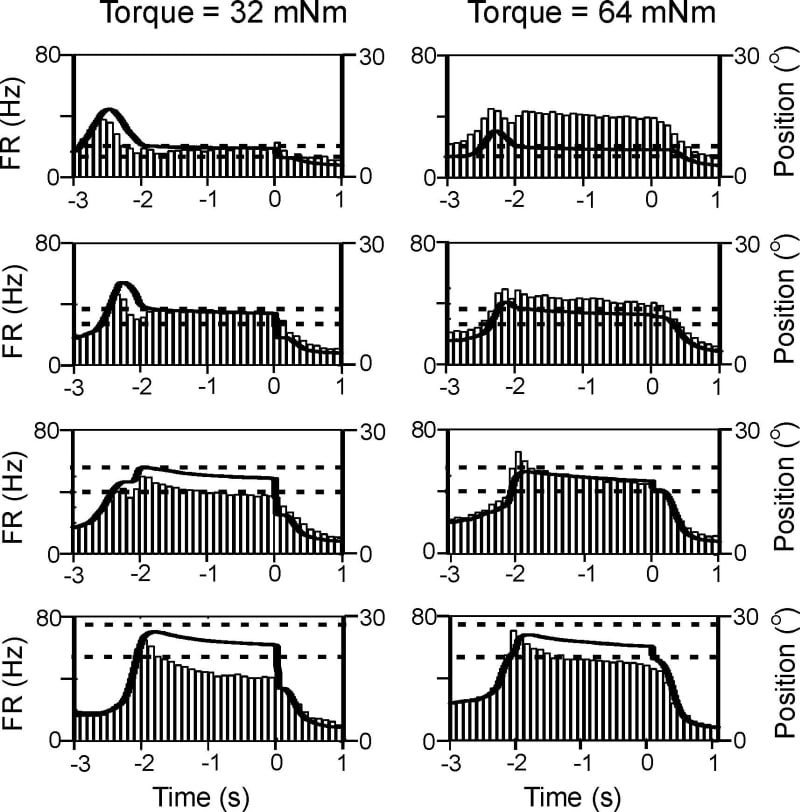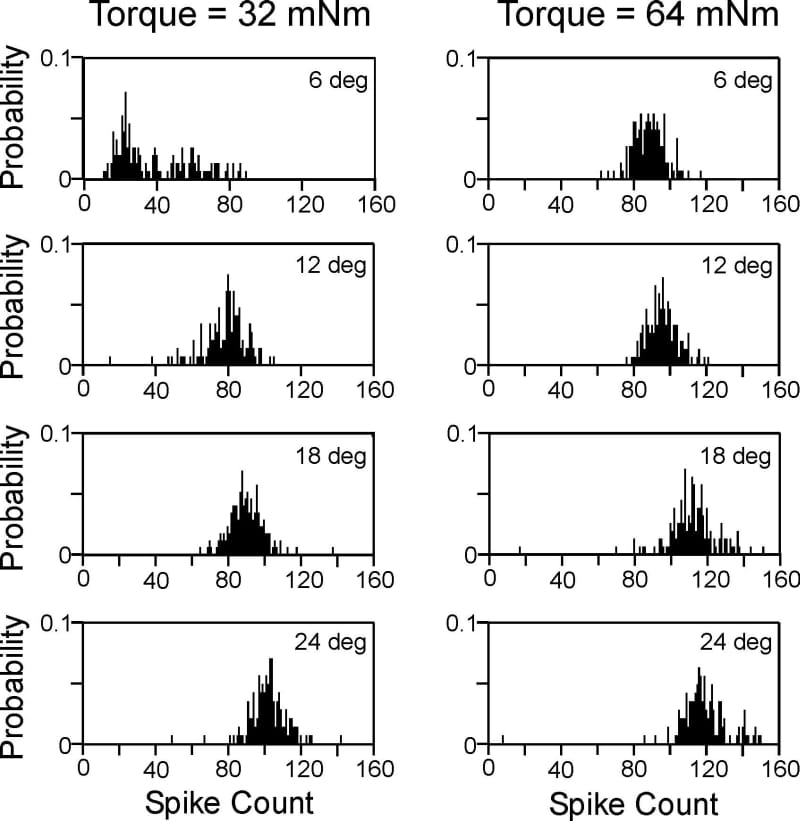In order to quantify the accuracy of proprioceptive encoding, we recorded multiple single unit discharge from motor and somatosensory cortex (M1 and areas 3a and 2) in a macaque monkey performing an index finger flexion task for food reward. Following behavioural training, the monkey was implanted under general anaesthesia (3.0-5.0% sevoflurane and 0.025mg/kg/h alfentanil) and aseptic conditions with a headpiece, to allow head fixation, and a recording chamber placed over the central sulcus. Two stimulating electrodes in the pyramidal tract permitted antidromic identification of M1 pyramidal tract neurones (PTNs). In daily experiments, neurone spikes were recorded using a 16-channel microdrive, loaded with either glass-insulated platinum electrodes (M1) or tetrodes (areas 3a and 2). The task required matching lever position and torque to a target. Each trial could be one of 8 types (4 positions x 2 torques); this degree of uncertainty is quantified as 3 bits. For each trial, we measured the number of spikes produced during the 2s hold period. Since this was differently distributed for the different trial types (Figs 1 and 2), observing the spike count reduced the uncertainty about the trial performed, which measures the information encoded (0.91 bits for the illustrated cell). Using a shuffle method, we estimated and subtracted the bias in the information measure produced as a side effect of finite data lengths. Shuffling also allowed us to determine if information was significantly different from zero (P<0.05). Many cells encoded task-specific information in their firing rates: 61/111, 62/87 and 69/83 cells contained significant information in M1, areas 3a and 2, respectively, with mean information in these areas (±SEM) 0.141±0.013 bits, 0.179±0.019 bits and 0.158±0.017 bits. In M1, PTNs were more likely to carry significant information than unidentified cells (10/16 vs 12/85 cells significant; Chi-squared test, P<0.05). In areas 3a and 2, cells with cutaneous receptive fields (RFs) carried less information than cells with deep RFs (0.121±0.022 vs 0.213±0.034 bits; Wilcoxon test, P<0.05). Cells related to the index finger (cutaneous or deep) carried more information than those with hand or forearm RFs (0.226±0.049 vs 0.132±0.028 bits; Wilcoxon test, P<0.05). We conclude that information theory can provide a unified framework for comparison of encoding by different areas.
University College London December 2005 (2006) Proc Physiol Soc 1, PC9
Poster Communications: Information theory analysis of proprioceptive encoding in primate sensorimotor cortex
Witham, Claire Louise; Wang, Minyan; Baker, Stuart;
1. Sir James Spence Institute, University of Newcastle, Newcastle, Tyne and Wear, United Kingdom.
View other abstracts by:
Figure 1. Example responses of an area 3a neuron (bars) aligned to the end of the hold period. Averaged lever position is shown overlain (solid line) together with the target zone (dotted lines).
Figure 2. Distribution of spike counts during the 2s hold period for the cell shown in Fig. 1.
Where applicable, experiments conform with Society ethical requirements.


